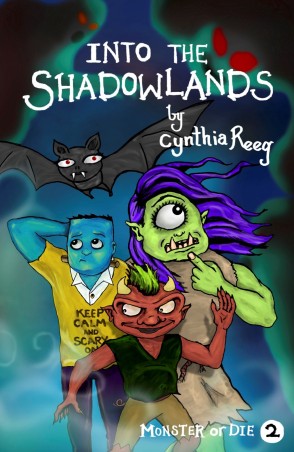Welcome to my interview with Author Dan Poblocki and his latest release TALES TO KEEP YOU UP AT NIGHT! **Teachers, Parents: With the spooky season creeping every so slowly upon us, this is the perfect book to add to your reading list.
THE BOOK

TALES TO KEEP YOU UP AT NIGHT by Dan Poblocki
Publisher: Penguin Random House Released: August 16, 2022
Amelia is cleaning out her grandmother’s attic when she stumbles across a book: Tales to Keep You Up at Night. But when she goes to the library to return it, she’s told that the book never belonged there. Curious, she starts to read the stories: tales of strange incidents in nearby towns, journal entries chronicling endless, twisting pumpkin vines, birthday parties gone awry, and cursed tarot decks. At the center of the stories lies a family of witches. And witches, she’s told, can look like anyone. As elements from the stories begin to come to life around her, and their eerie connections become clear, Amelia begins to realize that she may be in a spooky story of her own.
TALES TO KEEP YOU UP AT NIGHT is the perfect next-read for fans of Scary Stories to Tell in the Dark!. An excellent addition to Halloween round ups, middle grade readers will be glued to the pages, up way past their bedtimes, reading with flashlights, as they explore each of these interconnected stories. With frightening artwork at the start of each chapter, this book keeps readers engaged and terrified from beginning to end.
THE INTERVIEW🎙️
Hi Dan! It’s great to have you visit our spooky crypt. Let’s start with this: A description of Tales To Keep You Up At Night appears in the local newspaper. What does it say?
What do you do if you find a mysterious book in your missing grandmother’s attic? If you’re Amelia, you try to return it to the local library. But what if the librarian says the book doesn’t belong there? Amelia reads the creepy tales within – stories about bad birthday parties and scary sleepovers, about revenge gone wrong and weird rocks out in the woods, about a family of witches who may or may not have the right to be very angry – and by sunset she realizes that the stories are not just stories. Like the title of her new book suggests, Amelia won’t be getting ANY sleep tonight.
That would definitely draw in some attention.
Set the stage as the story begins and what happens when your main character Amelia sneaks into an old attic.
Amelia’s story begins when she and her family are at Grandmother’s house to finally clean it out. Grandmother has been gone for a year. Amelia’s mothers say Grandmother has passed on, but Amelia doesn’t believe it. Annoyed, Amelia sneaks up to the quiet attic and remembers a dream in which Grandmother hands her a book called Tales to Keep You Up at Night. To her surprise, the very book is lying on the dusty floor. Is this a clue about what really happened to Grandmother, or is this just another library book? Flipping through the tales, Amelia soon learns that the answer is a little bit of both, but also . . . a little bit of neither . . .
Like most of your books, Amelia’s story is grounded in spooky elements. What makes this spooky world different or unique from the other scary tales you’ve written?
Tales to Keep You Up at Night is my first foray into short stories. So that feels unique. Like many of my previous work, I was inspired by the books I read as a kid, books that kept my eyes glued to the pages, and that was my goal here, as it has been since I started writing. There are many elements in TALES that I pulled from my own previous work, and perceptive readers might catch clues about how my other books are tied together in a great big web, just like the short stories in TALES. Another unique aspect of Amelia’s story was being able to play with format; there are tales in this new book that are homages to the styles of classic American story-tellers, that are written in unusual Points Of View, and even one that is a series of journal entries. It was a fun challenge to change things up in these ways.
Sounds like a great book for all students, but especially for those reluctant readers out there.
STORY CHARM🌟
You’ve inserted other stories within Amelia’s main story. Would you share how you made it all fit together?
It was like piecing together the biggest puzzle I’ve ever worked on. Simply put, I first mapped out which tales would be in the novel. Then, I wrote them, one by one. And as I went along, I noted characters and elements from the tales that might overlap with others. Once I understood that ALL of the tales related to Amelia’s own life, I leaned hard into making those overlapping details as strong as I could, so that the entire book reads more like a novel than a collection of tales. Though, now I can see that the book is BOTH of those things, which I think is pretty cool.
And I’m sure readers will think that’s pretty cool, too!
Do you have a favorite scene in the book?
In the tale called “The Volunteers,” a series of horrifying events befalls a family after they reject a gift of pumpkins from their witchy neighbors. By the end of the story, the main character realizes he’s all alone, in the dark, and he reflects back on his life, and his family, and what got them to this place. These little moments click together in his mind as he scrambles to write them all down. It’s a whirlwind of thought and emotion and worry about the choices he must now make, and every time I reread it, I get chills. The details feel real and true, and this makes the moment even scarier.
#GULP
AUTHOR’S CORNER 🖊️
What is the hardest part about writing?
The hardest part for me is the waiting. I find that most times, I can push myself to put down words on the page easily enough (especially if I don’t think of them as overly-precious words), but then, waiting to hear back from other people about what they thought or if the manuscript will sell, and finally, everything that leads up to a book coming out into the world is so stressful. But it’s also out of my control. The best thing I can do in those circumstances is start writing something new, just for myself. That’s what I can control, and that’s what keeps me grounded. Keeps me going.
What do you believe young readers can gain from reading spooky tales?
I can talk about what I gained from reading spooky tales as a young reader: a love for turning pages to find out what will happen next; for Story with a capital S; a sense of how to solve problems that scare you; that there may be a way out of the dark if you look hard enough; that children can be (and sometimes need to be) as brave (or braver!) than any adult. And especially: If a story feels TOO spooky, you can ALWAYS put the book down and say, NOT TODAY, DAN POBLOCKI, YOU SCOUNDREL! (Trust me, I don’t mind.)
Any advice for teachers and parents out there on how to encourage middle schoolers to engage in more independent reading and writing?
Thinking back to what first got me excited and engaged: Reaching for what felt accomplishable. Sometimes those were books with lots of pictures, or comic strips, or comic books, and then, eventually graphic novels, even poetry and short story collections. I’m not saying these things are necessarily “easy” but they have an added appeal for reluctant readers that other books might not. I liked being able to finish reading something, even if it was a page or two long. So, maybe, let kids read what they want to read, don’t push them away from what you think isn’t right/ sophisticated enough for them, and then encourage them to explore what might be directly adjacent to their interests, to expand the Venn diagrams of their minds.
Inquiring minds want to know: What can your readers expect from you next?
Next up are MORE TALE TO KEEP YOU UP AT NIGHT. Specifically, another novel of interconnected scary stories that piggybacks off of Tales to Keep You Up at Night with new characters, new settings – even some familiar names and faces. You won’t need to read the first collection to enjoy this next one, but it certainly won’t hurt (at least . . . I hope it won’t. I can’t make any promises!).
JUST FOR FUN🤪
Have to ask: What scares you?
Many of my early nightmares were about giant mouths filled with sharp teeth, which is weird because now that I’m a little more grown-up, I have an irrational fear of being eaten alive . . . By fish, bears, pythons, alligators, even by hungry humans! NOPE. NO WAY. (NOT TODAY.) I still have a difficult time looking at photographs of animals (especially from the deep ocean) with wide jaws and their mouths full of little serrated blades. Yowch! Please, never show me a picture of a shark. I will fall to the floor and cover my head, and then I’ll be embarrassed and you’ll be embarrassed and no one will have a good time anymore, at all, ever.
Um, yeah . . . you probably should stay away from giant teeth. LOL
Thank you for sharing your spooky tales with our readers! All the best to your from your #SpookyMG crew!
THE AUTHOR

Dan Poblocki is the co-author with Neil Patrick Harris of the #1 New York Times bestselling series The Magic Misfits (writing under the pen-name Alec Azam). He’s also the author of The Stone Child, The Nightmarys, and the Mysterious Four series. His recent books, The Ghost of Graylock and The Haunting of Gabriel Ashe, were Junior Library Guild selections and made the American Library Association’s Best Fiction for Young Adults list in 2013 and 2014. Dan lives in Saugerties, New York, with two scaredy-cats and a growing collection of very creepy toys.
About the illustrator: Marie Bergeron was born and raised in Montreal. After studying cinematography,
she attended École de Design. Her style is inspired by many things, including films and games,
contrasting a more graphic approach with organic strokes. Her clients have included Marvel Studios,
Paramount Pictures, Warner Bros., Fox Entertainment, and more.
*So Readers, what do you think about Dan’s new book?



 In my Ghosts of Ordinary Objects’ series, food plays an important role. Bone (the main character) is growing up in a relatively poor part of the world (Appalachia) that’s now experiencing war rationing. Yet, her childhood is filled with food: from sweet tea to ham biscuits to collard greens to preacher cookies. Appalachian and most of Southern cuisine, and in fact most cuisines worldwide, grows out of necessity: poor people making the most out of the ingredients they have around them. Food tells you so much about the culture and their part of the world. (See below for a preacher cookie recipe!)
In my Ghosts of Ordinary Objects’ series, food plays an important role. Bone (the main character) is growing up in a relatively poor part of the world (Appalachia) that’s now experiencing war rationing. Yet, her childhood is filled with food: from sweet tea to ham biscuits to collard greens to preacher cookies. Appalachian and most of Southern cuisine, and in fact most cuisines worldwide, grows out of necessity: poor people making the most out of the ingredients they have around them. Food tells you so much about the culture and their part of the world. (See below for a preacher cookie recipe!)























